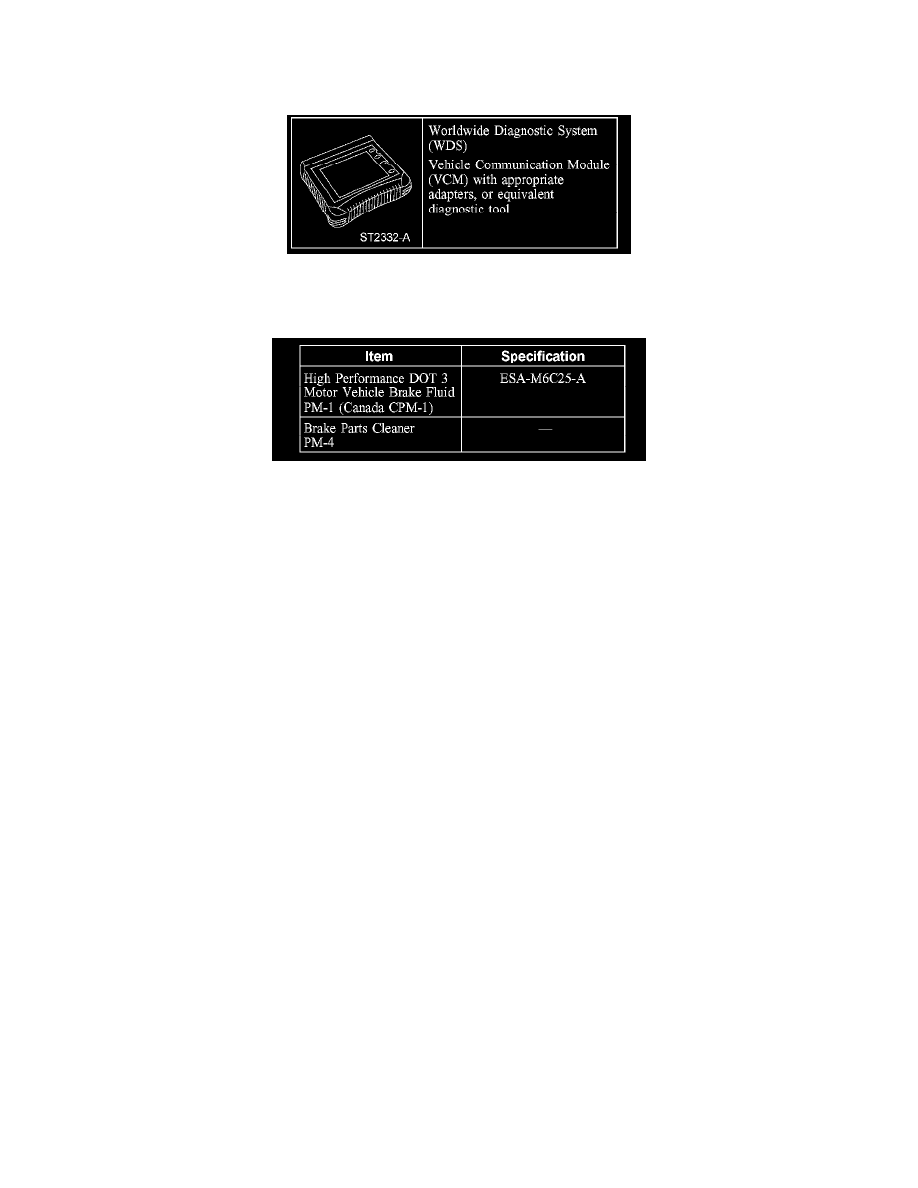Five Hundred AWD V6-3.0L VIN 1 (2005)

Brake Bleeding: Service and Repair
Brake System Bleeding
Brake System Bleeding
Special Tools And Equipment
Special Tool(s)
Material
Material
Manual
WARNING: Use of any other than approved DOT 3 motor vehicle brake fluid will cause permanent damage to brake components and will
render the brakes inoperative. Failure to follow these instructions may result in personal injury.
WARNING: Brake fluid contains polyglycol ethers and polyglycols. Avoid contact with eyes. Wash hands thoroughly after handling. If
brake fluid contacts eyes, flush eyes with running water for 15 minutes. Get medical attention if irritation persists. If taken internally, drink
water and induce vomiting. Get medical attention immediately. Failure to follow these instructions may result in personal injury.
CAUTION: Brake fluid is harmful to painted and plastic surfaces. If brake fluid is spilled onto a painted or plastic surface, immediately wash it with
water.
CAUTION: Do not allow the brake master cylinder reservoir to run dry during the bleeding operation. Keep the brake master cylinder reservoir filled
with the DOT 3 motor vehicle brake fluid. Never reuse the brake fluid that has been drained from the hydraulic system.
NOTE: Due to the complexity of the fluid path within the rear integral parking brake calipers, it is necessary to press and release the parking brake
during the bleed procedure.
NOTE: If the hydraulic control unit (HCU), or any component upstream of the HCU are installed new, carry out the Brake System Pressure Bleeding
procedure first without the diagnostic tool, followed by the Brake System Bleed procedure using the diagnostic tool. The Component Bleeding Rear
Brake Caliper procedure is not required as the rear calipers were not replaced.
NOTE: When any part of the hydraulic system has been disconnected for repair or installation of new components, air can get into the system and
cause spongy brake pedal action. This requires bleeding of the hydraulic system after it has been correctly connected. The hydraulic system can be
bled manually or with pressure bleeding equipment. Bleeding the system with pressure bleeding equipment is the preferred method.
1. Connect the diagnostic tool cable adapter into the vehicle data link connector (DLC) under the dash and follow the diagnostic tool instructions.
